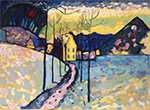Significant World Writers
Grp 4: Gender Identity

"I Am a Temple of the Holy Ghost" (199).
"A Temple of the Holy Ghost" (1954; 1955)
Flannery O'Connor's "A Temple of the Holy Ghost" (1954; 1955), 197-209
- upon what criteria does our twelve-year-old, unnamed protagonist rely when deciding that her older second cousins are intellectually inferior to herself?
- besides intellectism, of what other –isms and failings is the child guilty, and is she aware of these faults in herself?
- under what circumstances is the clause “I am a Temple of the Holy Ghost” first introduced in this tale, and what does the child make of it?
- does the child’s creative imagination serve her well?
- why does the child’s mother invite the Wilkins boys, Wendell and Cory, to hang out with her nieces?
- the child thinks these two boys stupid because they do not know Latin and are unfamiliar with the "Tantum Ergo," the final verses of the "Pange Lingua" written by Thomas Aquinas (c.1264). Is the subject matter of this eucharistic hymn at odds with the content of the Protestant hymns sung by the boys?
- what four occupations does the child consider for herself, and which does she currently think best? Why?
- though the child usually says her prayers automatically, sometimes her mind strays to and lingers upon what particular, pictorial narrative?
- what is the unnamed condition of the “freak” whom the two girls see at the fair? What attitude does this individual adopt towards the condition in question?
- as the child mentally plays back her cousins’ account of the freak, what new elements does she insert into it? Does her imagination turn the event into something resembling more a Catholic mass or Protestant revival, and what is the tone of the reimagined scene?
- immediately following her prayer to behave with less ugliness towards others, the child notices the Host (bread, symbolizing Christ’s body in the Eucharist/Communion) and envisions the freak (208-209). Can you trace any thematic connections among these three narrative elements?
- tackle the latent symbolism of this story’s final line.

Winter Landscape (1909)
Wassily Kandinsky
Dr. Paul Marchbanks
pmarchba@calpoly.edu
![]()
